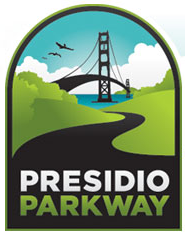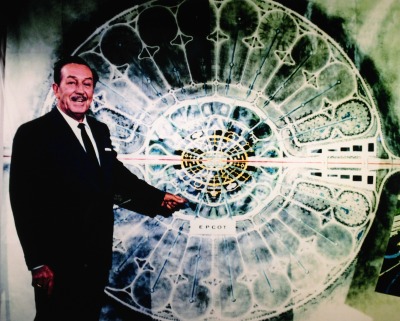 A stone's throw from the Museum is a stretch of highway that connects San Francisco with the Golden Gate Bridge. Locals call this road Doyle Drive and it's being slowly transformed into what will eventually be known as Presidio Parkway. After the dust settles, we'll have a thoroughfare that improves traffic and is more seismically stable. Part of what's remarkable about the Parkway is that it will accommodate not only motorists, but also cyclists and pedestrians. After all, cities are ultimately built to provide places for people to live and not just to help automobiles get from one place to another.
A stone's throw from the Museum is a stretch of highway that connects San Francisco with the Golden Gate Bridge. Locals call this road Doyle Drive and it's being slowly transformed into what will eventually be known as Presidio Parkway. After the dust settles, we'll have a thoroughfare that improves traffic and is more seismically stable. Part of what's remarkable about the Parkway is that it will accommodate not only motorists, but also cyclists and pedestrians. After all, cities are ultimately built to provide places for people to live and not just to help automobiles get from one place to another.
The "people first" designing philosophy is not exclusive to this one civic project; it was also championed by Walt Disney when he set out to design his own city--the Experimental Prototype Community of Tomorrow (EPCOT). When someone says "EPCOT," most people today tend to think of the Epcot theme park in Florida. However, as visitors to the Museum's Gallery 9 learn, EPCOT was designed to be an actual, living, working city of tomorrow. Sadly, Walt passed away before he could move this project from the drawing board to the construction site, but its legacy endures through other places that contain common design elements.
 One such element is EPCOT's downtown district. Residents and visitors there would have enjoyed a pedestrian-only environment filled with shops, restaurants, and a thirty-story hotel. Also, seeing as EPCOT was planned for humid Central Florida, Walt would have had the entire downtown enclosed and climate-controlled. Thirty years later, something similar was being planned in Las Vegas. Business leaders zeroed in on five blocks of their downtown, turned it into a pedestrian-only zone, and placed the whole area under an open-air, metal canopy to create the Fremont Street Experience.
One such element is EPCOT's downtown district. Residents and visitors there would have enjoyed a pedestrian-only environment filled with shops, restaurants, and a thirty-story hotel. Also, seeing as EPCOT was planned for humid Central Florida, Walt would have had the entire downtown enclosed and climate-controlled. Thirty years later, something similar was being planned in Las Vegas. Business leaders zeroed in on five blocks of their downtown, turned it into a pedestrian-only zone, and placed the whole area under an open-air, metal canopy to create the Fremont Street Experience.
Back in the 1960s, EPCOT's downtown, recreational areas, and housing neighborhoods would have all been interconnected by public transportation. Each area would have had a stop on theWEDWay PeopleMover (which today carries guests through Walt Disney World's Tomorrowland). If residents had business outside of EPCOT, then they could hop on a monorail to get there. Today, this reliance on public transportation provides the foundation for places called transit villages. In states like California, Florida, and New Jersey, these communities place newly built apartment complexes next to commuter rail stations with the goal of making travel easy and convenient.
Although driving would have been made obsolete by EPCOT's design, people would have still been welcome to bring their cars. In fact, the entire city was to have had a basement level for automobiles to use, keeping the street level for pedestrians. This idea was eventually put to use when Imagineers when designed Florida's Magic Kingdom and Epcot (the theme park). Both parks (although only a portion of Epcot) were built with a network of tunnels underneath their main levels, which allow support vehicles to get from one place to another without disrupting the guest experience. And, in 2015, the idea of accommodating pedestrians and motorists will pay off again when you will be able to walk from the Museum to the shores of San Francisco Bay over the grass covered tunnels of Presidio Parkway.
If you have another example of how EPCOT's design lives on today, we would love to hear about it in the comments section below!

Jeffrey Moffit
Volunteer at The Walt Disney Family Museum
A number of streets surrounding The Walt Disney Family Museum will be closed this weekend, April 27-30 (8PM Friday to 5AM Monday) for the Doyle Drive Construction project. For more information, please visit: http://presidioparkway.org/weekendclosure/. The Museum will still be open and accessible, but it is highly recommended that visitors should plan accordingly to the information provided at the link above. We apologize for the inconvenience this may have caused you, and thank you very much for your patience and understanding!
